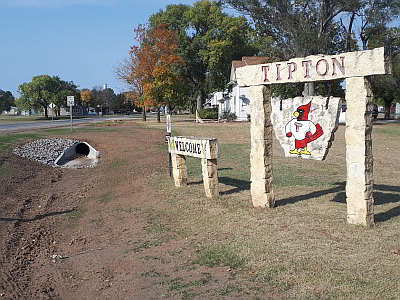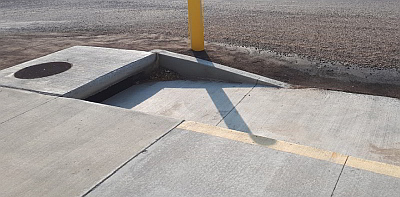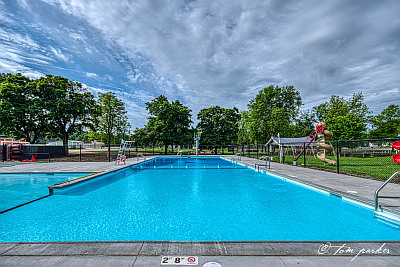
The City of Blue Rapids swimming pool project was completed earlier this year. (Photo courtesy of Tom Parker)
A recently completed project in the City of Blue Rapids is making a splash this summer.
The project was made possible, in part, through a special round of Community Development Block Grant (CDBG) funding awarded in 2019. The grant award was $763,411. The Small Cities CDBG program is administered by the Kansas Department of Commerce. The city also contributed more than $580,000 through general obligation bonds and local fundraising efforts.
The project included demolition of the existing swimming pool and construction of an accessible, zero entry swimming pool. The newly constructed pool opened on May 25 with 200 people attending the opening ceremony. The pool closed a month early last summer to begin project demolition and construction.
“The best part of the project is that people are really glad to be able to come to a clean pool and a fun environment,” Blue Rapids City Clerk Chrystal Busey said.
The original facility was built in the early 1950s and repairs had become increasingly burdensome for the community. Local fundraising efforts had been underway for a number of years to update the swimming pool.
“Blue Rapids was presented with a unique opportunity when Kansas Department of Commerce announced this special round of funding,” NCRPC Executive Director Emily Benedick said. “The community had already been working toward updating its pool and that commitment helped pave the way for a successful application.”
The resulting project has enhanced summer recreation opportunities for residents and visitors to the community. The swimming pool is located in Blue Rapids’ City Park located at one of the main entry points into the city along KS HWY 9/US HWY 77. It is also adjacent to the Marshall County Fairgrounds and baseball fields and playgrounds.
On its own, the city also financed a bath house separate from the swimming pool project.
Key partners involved with the project included project engineers CES Group of Marysville and Trinium Contractors, Inc of Manhattan. NCRPC staff provided project planning assistance, grant writing and administration.
There are many great things happening in North Central Kansas. Project Spotlight shares stories from communities around the region and how they solved challenges. To view more Project Spotlights, visit https://www.ncrpc.org/tag/project-spotlight/.
This article appeared in the July 2021 NCRPC Newsletter.

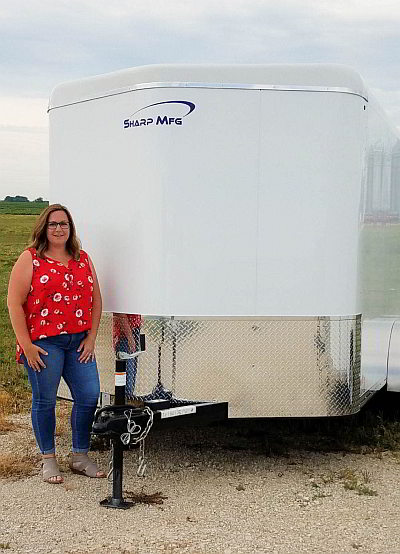
 Two housing nonprofit organizations were launched in the region in 2018 with the purpose of helping to preserve and strengthen housing in North Central Kansas. That mission continues today.
Two housing nonprofit organizations were launched in the region in 2018 with the purpose of helping to preserve and strengthen housing in North Central Kansas. That mission continues today. The NCRPC is updating its regional Comprehensive Economic Development Strategy (CEDS) and needs your help. We invite you to take a short survey if you live or work in North Central Kansas — including the counties of Clay, Cloud, Dickinson, Ellsworth, Jewell, Lincoln, Marshall, Mitchell, Ottawa, Republic, Saline and Washington.
The NCRPC is updating its regional Comprehensive Economic Development Strategy (CEDS) and needs your help. We invite you to take a short survey if you live or work in North Central Kansas — including the counties of Clay, Cloud, Dickinson, Ellsworth, Jewell, Lincoln, Marshall, Mitchell, Ottawa, Republic, Saline and Washington.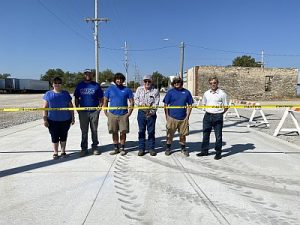

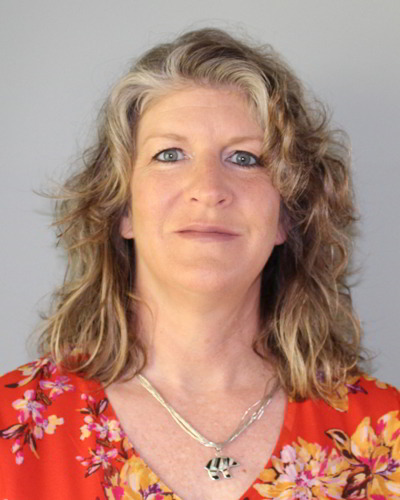
 Two high school seniors in North Central Kansas are being recognized with the John R. Cyr Rural Voices Award for submitting the top entries in the 2020-2021 Rural Voices Youth Contest sponsored by the NCRPC.
Two high school seniors in North Central Kansas are being recognized with the John R. Cyr Rural Voices Award for submitting the top entries in the 2020-2021 Rural Voices Youth Contest sponsored by the NCRPC.